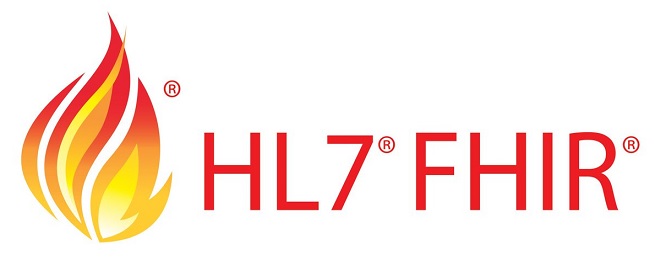Aligning Interoperability and Data Exchange in Healthcare IT Standards


In the era of digital healthcare, the ability to share and exchange data between different healthcare systems and applications is crucial for effective communication and seamless patient care. To achieve this, it is vital to implement healthcare IT standards that ensure secure interoperability and data exchange.
This blog post explores the significance of these concepts and their role in promoting efficient healthcare delivery. By embracing these standards, healthcare providers can streamline their operations, improve patient outcomes, and enhance the overall quality of care...
Understanding Interoperability and Data Exchange
Interoperability refers to the ability of different healthcare systems and applications to communicate and exchange data seamlessly. By adhering to healthcare IT standards, such as defining the structure and format of data, healthcare providers can ensure that different electronic health record (EHR) systems can communicate effectively. This promotes continuity of care, reduces medical errors, and improves patient outcomes.
Data Exchange, on the other hand, focuses on securely sharing patient information across different healthcare settings. Healthcare IT Standards provide guidelines and protocols for safeguarding sensitive patient information during data exchange, incorporating encryption and authentication mechanisms to ensure data security.
Secure interoperability and data exchange enabled by healthcare IT standards lay the foundation for a connected healthcare ecosystem that prioritizes patient-centered care, data-driven decision-making, and improved healthcare outcomes.
The Role of Healthcare IT Standards in Interoperability
It is essential to understand the significance of these standards in facilitating the exchange of information between various healthcare entities, including hospitals, clinics, laboratories, and pharmacies.
Adhering to healthcare IT standards ensures that different electronic health record (EHR) systems can communicate with each other effectively. These standards define the structure and format of data, creating a common language that enables seamless data exchange. With interoperability, healthcare providers can access and share patient information securely, regardless of the EHR system they use. As a result, there is continuity of care, fewer medical errors, and improved patient outcomes.
Ensuring Data Security in Healthcare IT Standards
With the increasing digitization of healthcare data, ensuring data security has become a top priority in the healthcare industry. Healthcare IT Standards provide guidelines and protocols for safeguarding sensitive patient information during data exchange. It is the responsibility of a Chief Medical Information Officer (CMIO) to implement these standards to protect patient privacy and maintain the confidentiality of health records. By doing so, the CMIO can help to ensure that patient's personal and medical information remains secure and protected from unauthorized access.
Healthcare organizations rely on healthcare IT standards to safeguard patient data. These standards include encryption and authentication mechanisms to ensure secure data transmission. Furthermore, they address data integrity, ensuring that information remains unchanged during exchange. By implementing these standards, CMIOs can mitigate the risk of data breaches and unauthorized access to patient records. In addition, compliance with these standards helps organizations meet regulatory requirements, such as HIPAA, further bolstering data security.
Benefits of Secure Interoperability and Data Exchange
Implementing healthcare IT standards for secure interoperability and data exchange offers numerous benefits to healthcare organizations and patients alike. Let’s take a look at the following benefits:
Seamless Exchange of Information - secure interoperability and data exchange enables seamless sharing of patient information across different healthcare settings, facilitating coordinated care and reducing duplication of tests and procedures. This leads to improved patient outcomes and overall satisfaction throughout the patient experience.
Support Population Health Management and Research Initiatives - by aggregating and analyzing data from multiple sources, healthcare organizations can gain valuable insights into disease patterns, treatment effectiveness, and population health trends. This information can drive evidence-based decision-making, improve healthcare quality, and contribute to the advancement of medical knowledge.
Promote Innovation and Competition - the adoption of healthcare IT standards promotes innovation and competition in the healthcare industry. It encourages the development of interoperable healthcare technologies and applications, fostering a marketplace of solutions that can enhance patient care and streamline workflows.
Overall, secure interoperability and data exchange, enabled by healthcare IT standards, lay the foundation for a connected healthcare ecosystem that prioritizes patient-centered care, data-driven decision-making, and improved healthcare outcomes.
Best Practices for Successful Implementation
To ensure the successful implementation of healthcare IT standards for secure interoperability and data exchange, Chief Medical Information Officers should consider these best practices:
- Engage Stakeholders - collaborate with key stakeholders, including clinicians, IT professionals, and administrators, to understand their needs. Their involvement in the planning and implementation process is vital for successful adoption.
- Conduct a Thorough Assessment - evaluate the organization's current IT infrastructure, systems, and workflows to identify any gaps or areas for improvement. This assessment will guide the selection and customization of healthcare IT standards to meet the organization's unique requirements.
- Prioritize Data Governance - establish robust data governance policies and procedures to ensure data accuracy, integrity, and security. Define roles and responsibilities for data management and establish mechanisms for ongoing data quality assurance.
- Invest in Training and Education - provide comprehensive training programs to healthcare staff to familiarize them with the adopted healthcare IT standards and promote their proper utilization. Continuous education and reinforcement are crucial for successful implementation and adoption.
- Monitor and Evaluate - regularly monitor and evaluate the effectiveness of the implemented healthcare IT standards. Collect feedback from users, track key performance indicators, and make necessary adjustments to optimize interoperability and data exchange.
By following these best practices, CMIOs can ensure a smooth transition to healthcare IT standards, guaranteeing secure interoperability and data exchange in their organizations.
To continue the conversation on this important topic, we encourage readers to check out our other blog posts to further explore the potential of healthcare IT standards and their impact on improving healthcare outcomes and patient-centered care.


